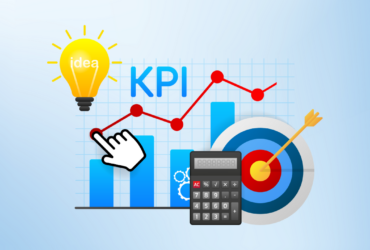
Boost Your Project Schedule: How to Leverage Leads and Lags
- July 31, 2024
- by
- tehreem
Feeling lost in a labyrinth of project timelines? Does scheduling feel like a guessing game, leaving you scrambling to meet deadlines?
Imagine a world where your project schedule becomes a roadmap to success, not a source of stress. Imagine a world where you can confidently predict project duration, identify potential delays before they arise, and optimize resource allocation for maximum efficiency.
Mastering leads and lags is the key to unlocking scheduling power in project management. These seemingly simple concepts hold immense value in creating realistic timelines and ensuring project success. This blog post will equip you with the knowledge and strategies to leverage leads and lags like a pro.
Demystifying Leads and Lags
Leads and lags may sound like technical jargon, but understanding them is crucial for effective project scheduling. Here’s a breakdown:
- Leads: Lead time refers to the minimum amount of time required to complete a task or activity after a preceding task is finished. For example, if you need to order materials for a construction project, the lead time might be the time it takes for the supplier to manufacture and deliver those materials.
- Realistic Timelines: Leads and lags ensure your timelines account for real-world constraints like material procurement times and task dependencies. This reduces the risk of underestimating project duration and scrambling to meet deadlines.
- Improved Resource Allocation: Understanding lead times allows you to plan resource allocation effectively. For example, you can schedule tasks requiring specific resources only after the lead time for those resources has been fulfilled.
- Proactive Risk Management: Leads and lags can help you identify potential delays before they occur. By understanding task dependencies and lead times, you can proactively address potential bottlenecks and mitigate risks.Lags: Lag time refers to the amount of time a subsequent task can begin before the completion of a preceding task. For example, painting a room can lag the installation of new flooring, as you wouldn’t want to paint before the new floor is in place.
The Power of Planning with Leads and Lags
By factoring leads and lags into your project schedule, you gain several advantages:
- Realistic Timelines: Leads and lags ensure your timelines account for real-world constraints like material procurement times and task dependencies. This reduces the risk of underestimating project duration and scrambling to meet deadlines.
- Improved Resource Allocation: Understanding lead times allows you to plan resource allocation effectively. For example, you can schedule tasks requiring specific resources only after the lead time for those resources has been fulfilled.
- Proactive Risk Management: Leads and lags can help you identify potential delays before they occur. By understanding task dependencies and lead times, you can proactively address potential bottlenecks and mitigate risks.
Mastering Leads and Lags in Practice
Now that you understand the concept, here are some practical tips for leveraging leads and lags in your project schedule:
- Identify Task Dependencies: Clearly define the dependencies between tasks in your project. This will help you determine the lead and lag times for each task accurately.
- Utilize Scheduling Software: Many project management tools, including Ontezo, offer features that allow you to easily factor in leads and lags when creating your schedule. These tools can automate calculations and provide visual representations of your project timeline.
- Maintain Communication & Flexibility: Project plans are not set in stone. Maintain clear communication with your team and be prepared to adjust leads and lags as unforeseen circumstances arise.
Take control of your project timelines and boost your scheduling efficiency. Leverage the power of leads and lags to create realistic plans, optimize resource allocation, and achieve project success. Explore Ontezo’s project management features and see how our software can help you master your project schedule!







3 Comments
The 7 Stages of Product Development - Ontezo Blogs
30th Jul 2024 - 7:01 am[…] Boost Your Project Schedule: How to Leverage Leads and Lags […]
How to Choose the Right Free Project Planning Software for Your Team? - Ontezo Blogs
13th Aug 2024 - 2:01 pm[…] Growing Team Size: As your team expands, you may need more robust tools to manage larger workloads. […]
Why Every Small Business Needs a CRM? - Ontezo Blogs
19th Aug 2024 - 1:14 pm[…] Tracking: With built-in analytics and reporting tools, a CRM enables you to track the performance of your sales and marketing campaigns. You can quickly […]